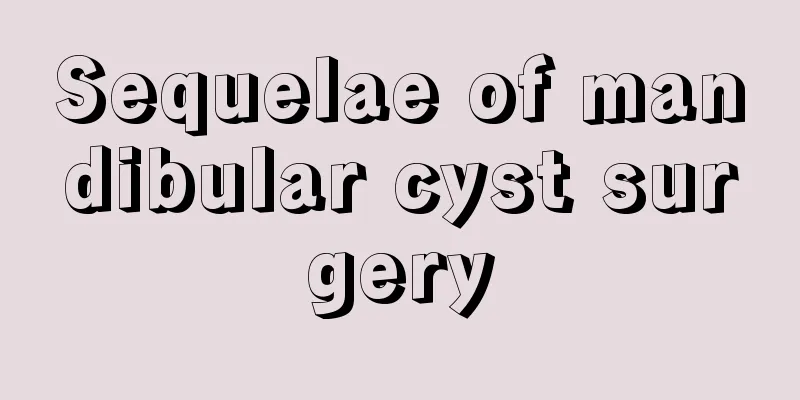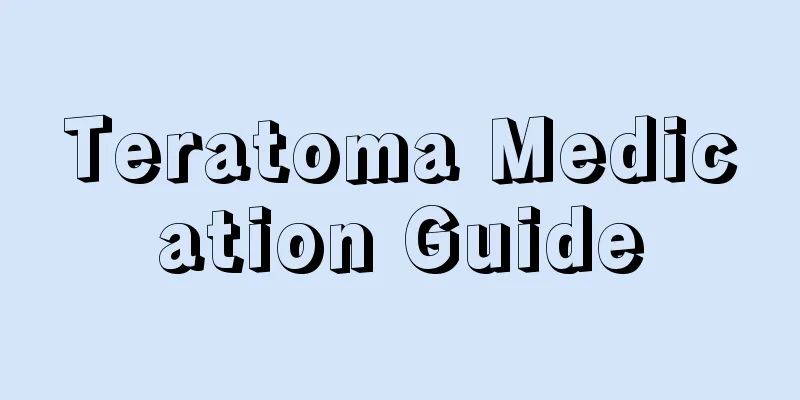Sequelae of mandibular cyst surgery

|
Mandibular cyst is a kind of swelling that grows on the mandible. Under normal circumstances, such a cyst will contain some fluid, and the pus will gradually grow larger. Mandibular cyst is a disease that generally occurs among young people. When suffering from mandibular cysts, patients will feel particularly uncomfortable. Currently, the treatment of mandibular cysts involves surgical removal. Mandibular cyst surgery complications 1. After the mandibular cyst surgery, if the operation range is large and the mandibular nerve canal is damaged, it may cause numbness of the lower lip and mandibular gums. You can use nerve nourishing drugs and do physical therapy to slowly recover, but if it takes a long time, it cannot be recovered. 2. The main complication of extraoral mandibular cyst removal is postoperative infection. In addition to the preventive measures mentioned above for the intraoral method, for cases with large mandibular cysts and thin buccal bone plates, the buccal bone plates can be removed and the lower edge of the mandible and the lingual bone plates can be retained, and a pressure bandage can be applied to the face to reduce the wound cavity. At the same time, intermaxillary fixation is performed to prevent pathological fractures. There are also cases where the buccal bone plate, periosteum and buccal tissue flap are turned up together before the cyst is removed. In this way, the buccal bone plate can be retained. It is worth emphasizing that maintaining unobstructed drainage is an important measure to prevent postoperative infection. Precautions In addition to the parts described in the intraoral method, the following points should be noted: ① When making an incision and flap in the submandibular area, damage to the marginal branch of the facial nerve should be avoided; ② When the inner bone plate of the mandibular ascending ramus is damaged, the cyst wall should be carefully peeled off to avoid damage to deep important nerves and blood vessels; ③ If the oral cavity is penetrated, the oral mucosa should be tightly sutured to maintain good extraoral drainage. This surgery is a radical procedure. The key to the operation is to completely remove the cyst wall while avoiding penetration or damage to adjacent anatomical structures. Therefore, the operating procedures should be strictly followed during the processes of flap opening, window opening, and cyst dissection. In addition, attention should be paid to the reasonable design of incisions and the correct treatment of intraoral wounds to prevent the occurrence of complications. ① Properly handle the teeth associated with the cyst; ② The incision should be designed reasonably and the intraoral wound should be sutured tightly to prevent wound dehiscence and fistula formation; ③Antibiotic powder can be placed in the bone cavity; ④ Antibiotics were selected after surgery. In addition, it is generally believed that for smaller cysts, after the cyst is removed, the blood can be allowed to fill the bone cavity, antibiotic powder can be added, and then the wound can be sutured tightly; however, for larger cysts, this method should not be used, and the blood clot should be thoroughly removed. |
<<: Tips on how to get rid of acne and acne marks
>>: Can soy isoflavones remove acne?
Recommend
Is pure milk or yogurt better?
We should drink milk and yogurt regularly in our ...
What are the early symptoms of lung cancer? Women will have these symptoms in the early stage of lung cancer
In the early stages of lung cancer, there are usu...
Iliotibial band syndrome quick recovery
People who like sports or who are not careful dur...
How long can you live with grade 2 breast cancer
People all know the harm of breast cancer. If the...
What to do if your hair has a lot of static electricity
When getting up in the morning, the first thing m...
Precautions for milk powder
Since the baby's chewing function is not full...
What's wrong with oily urine
The most significant activity of metabolism is ex...
Can you lose weight by doing sit-ups before going to bed? And what should you pay attention to?
Maybe many of my friends have the habit of doing ...
Zhonglibaren - Summer is the right time to cure winter diseases
The King of Medicine Sun Simiao said : "The ...
How to diagnose esophageal cancer
How to diagnose esophageal cancer? Let's talk...
Can malignant bile duct cancer be cured?
Many cancer patients are afraid of cancer, becaus...
How is Korean crystal made
As we know, Korean crystal is actually a very pop...
What are the reasons for frequent fatigue
Many women will find that they often feel tired, ...
Is allergy hereditary?
Everyone has something in common with their paren...
How to wash cotton clothes without fading?
Pure cotton clothes are also easy to fade when wa...









